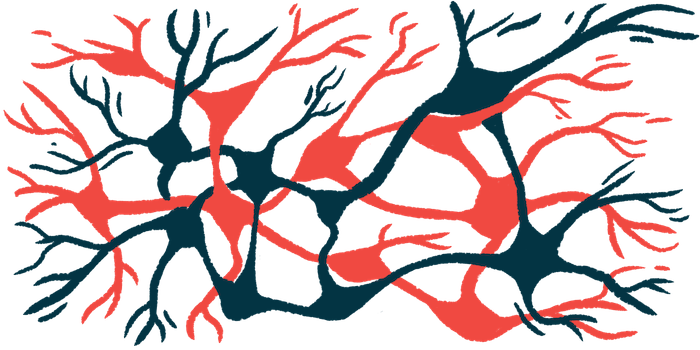Early stress pathway activation combats cell death in FUS-ALS
Heat shock response pathways, integrated stress response higher in patient-derived motor neurons

Early activation of certain cellular stress response pathways may help prevent the death of motor neurons in amyotrophic lateral sclerosis (ALS) patients with FUS mutations, according to a recent study.
In particular, heat shock response (HSR) pathways and the integrated stress response (ISR) were increased in patient-derived motor neurons compared with cells from healthy people, and protected against toxic cellular stress caused by FUS protein clumps.
Still, these cells correspond to a relatively early stage of disease. Researchers believe these processes are likely to fail later on, contributing to neurodegeneration.
The study, “FUS ALS neurons activate major stress pathways and reduce translation as an early protective mechanism against neurodegeneration,” was published in Cell Reports.
About 5% of familial ALS cases are caused by mutations in the FUS gene, which provides instructions for making a protein of the same name. Typically found in the cell nucleus, FUS plays various roles in regulating RNA metabolism and DNA repair. RNA is the intermediate molecule that guides the production of protein from a DNA template.
Some ALS-causing mutations in the FUS gene result in an abnormal FUS protein that, rather than going to the nucleus, accumulates in the cytoplasm — the fluid-filled space surrounding the nucleus — in motor nerve cells. This leads to toxic FUS clumps, or aggregates, forming.
These clumps can be particularly found inside stress granules (SGs), small clumps comprised of proteins and RNA molecules that are temporarily formed in response to cellular stressors as a way to shut down certain cellular activities.
Research suggests the recruitment of mutant FUS to SGs is one process that underlies ALS. FUS aggregates appear to influence SG function, leading to a disrupted protein production balance (proteostasis) and increased cell death.
Effect of FUS aggregates on stress granules
To better understand SG dynamics in FUS-associated ALS, researchers in Germany examined patient-derived motor neurons with FUS mutations that had been treated with certain molecules to induce cellular stress. These cells corresponded to relatively young cells that hadn’t been substantially impacted by neurodegeneration.
Results indicated a greater accumulation of FUS in the cytoplasm and a disruption of SG dynamics in the ALS motor neurons compared with healthy cells, particularly in response to stress.
“FUS neurons showed significantly more abundant and larger FUS-positive SGs,” the researchers wrote. Also, after a stressor, SGs were broken down more slowly in the FUS-ALS cells.
Certain cellular stress response pathways that’ve been implicated in regulating SG dynamics were activated in the FUS-ALS cells. Specifically, evidence suggested an increase of heat shock proteins (HSPs) and related molecules comprising the HSR in the ALS cells.
HSPs guide the proper folding of proteins and prevent their aggregation, but also regulate SG formation. HSR is normally activated in response to cellular stress to help maintain protein function and prevent cell death, but has shown to be diminished during neurodegeneration.
Inhibiting Hsp70, one of the main HSPs involved in that stress response pathway, led to a significant delay in breaking down stress granules. This was particularly pronounced in the patient-derived cells, resulting in an excessive accumulation of SGs.
The ISR pathway was also activated in mutant cells and was associated with decreased rates of translation, the process by which proteins are produced from an RNA template.
This process could “compensate for disturbed proteostasis by relieving the production of faulty protein species,” the researchers wrote. Interestingly, activating ISR also helped prevent mutant FUS levels from getting too high.
Further experiments showed HSR or ISR activation and the subsequent blockade of SG formation weren’t responsible for driving cellular death in the patient-derived cells. Instead, uncontrolled proteotoxicity — the accumulation of damaged or misfolded proteins under cellular stress — was the main driver of cell death in the early stages of FUS-ALS, according to the researchers. Thus, activation of ISR and HSR pathways appeared to be an early rescue mechanism to prevent this proteotoxicity.
“(Over)activation of stress response pathways in the mutant cells protects them from increased susceptibility to cell death early in the disease course even under proteotoxic overload and in spite of altered SG dynamics,” the researchers wrote. However, “it is likely that neurons lose the capability to upregulate HSP in response to FUS mutation with time, which may lead to a disrupted clearance of SG and FUS aggregation and a fatal decline of proteostasis” in the later disease stages, they said.
It’s likely that “the beneficial effect of ISR activation seen early in the FUS ALS pathology turns into a toxic mechanism over time,” they said, noting ISR inhibitors are being investigated for multiple neurodegenerative diseases. “The timing and duration of a potential [ISR inhibitor] treatment might be essential for observing preventive outcomes.”







